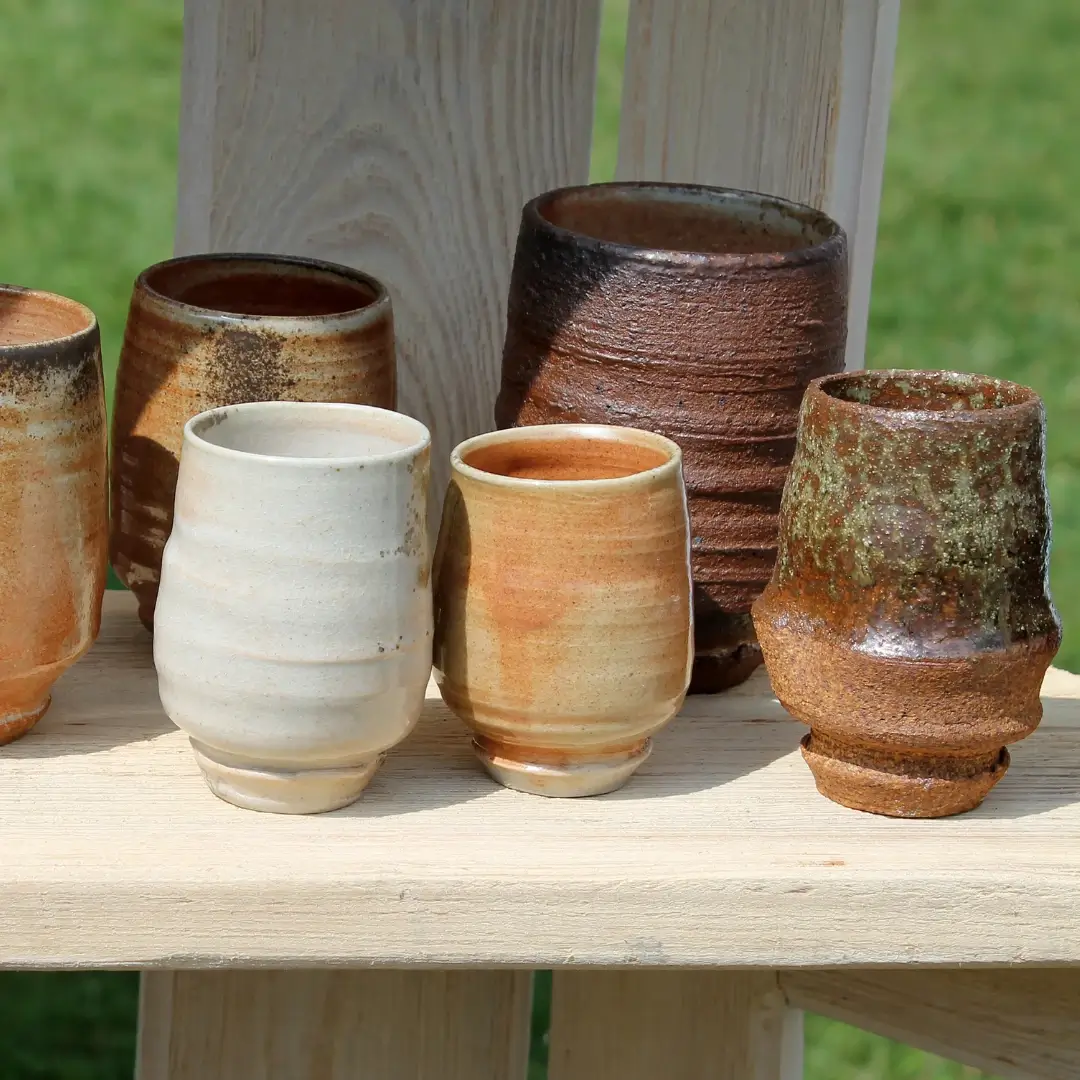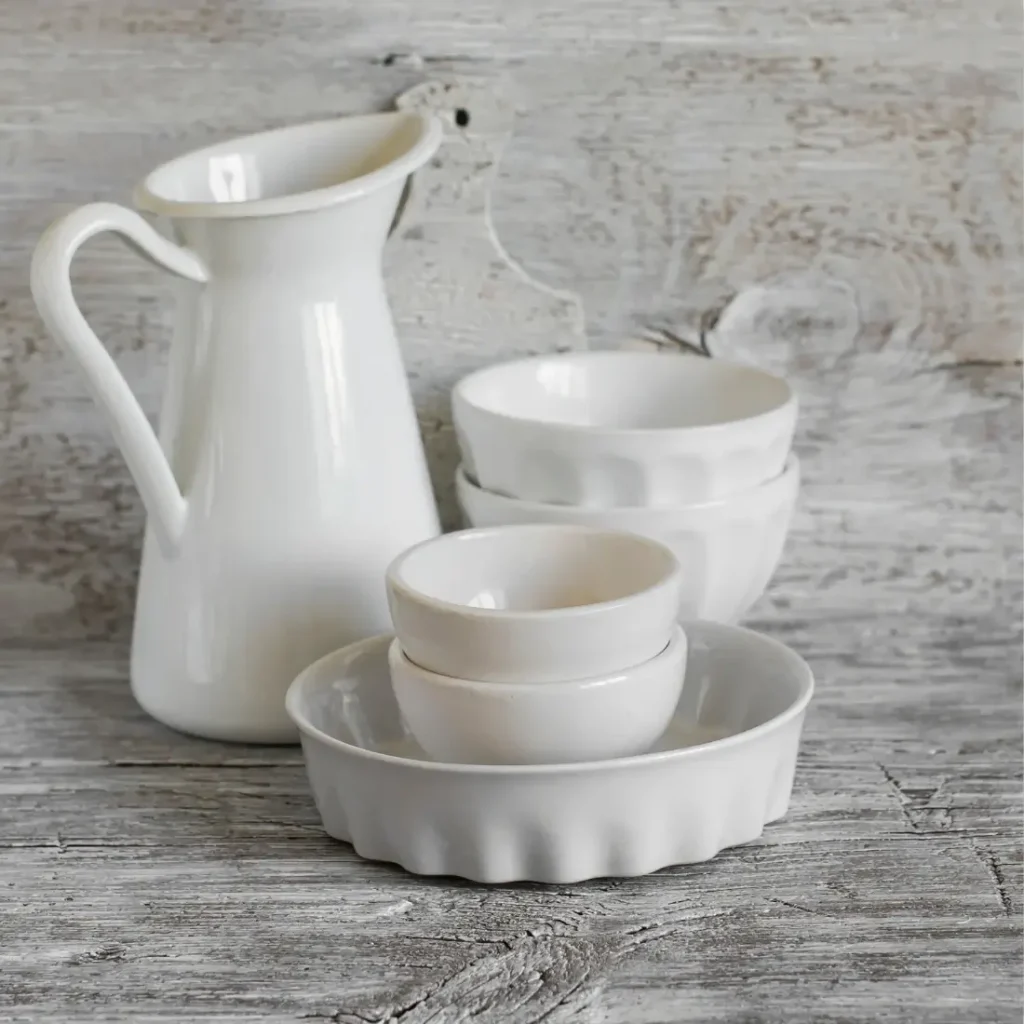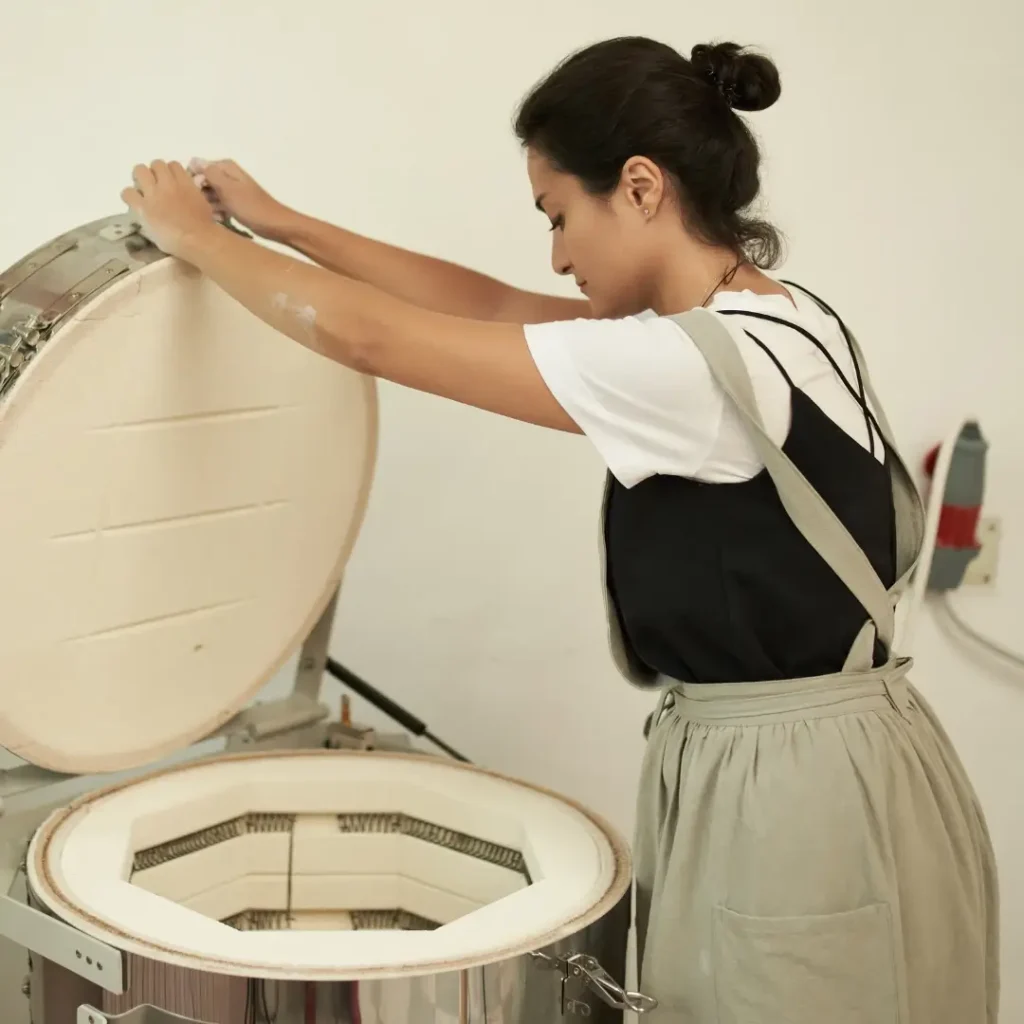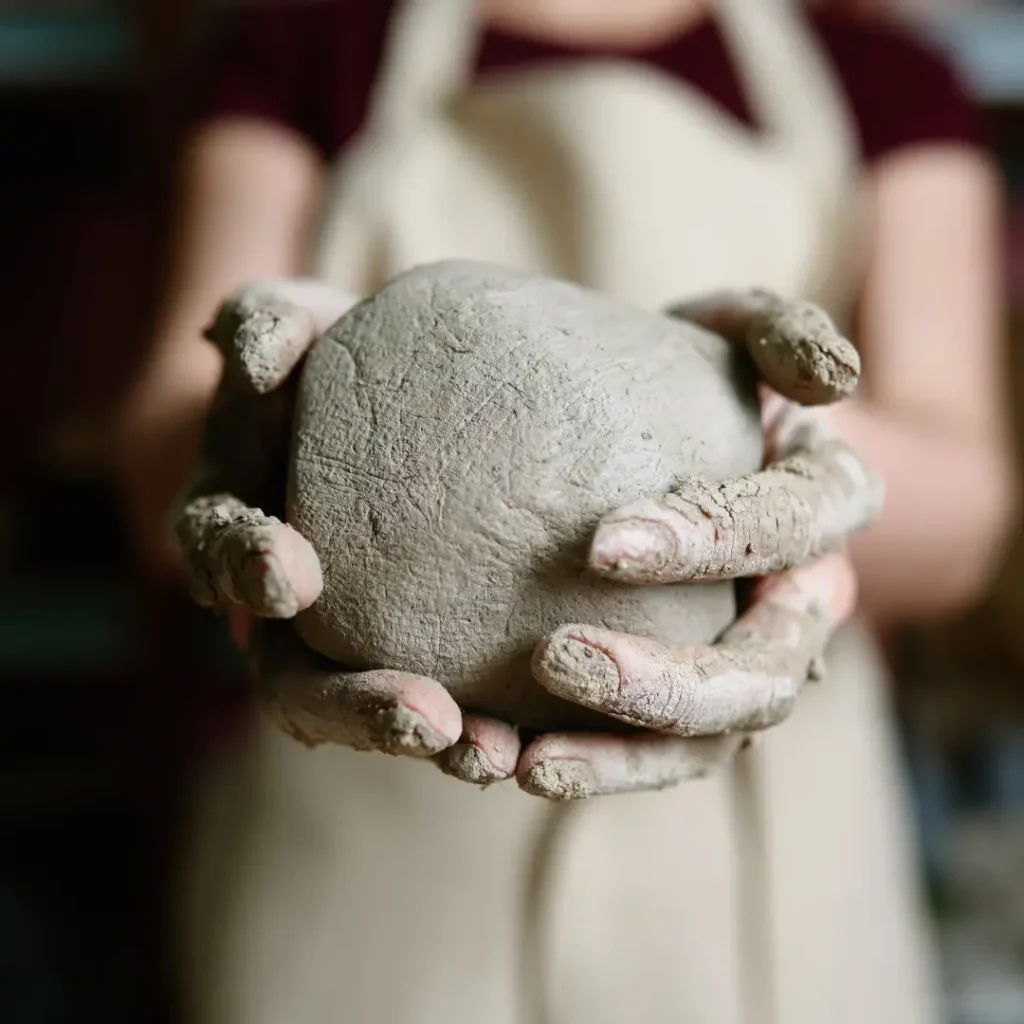How to Make a Living Selling Pottery
Making a living selling pottery blends artistry with entrepreneurial skills. It’s about more than just crafting beautiful pieces; it involves savvy branding, effective marketing, and strategic selling. Ready to turn your passion for pottery into a profitable business? Keep reading to uncover essential tips and inspiring success stories.

- Essential Tips for Starting Your Pottery Business
- Creating a Unique and Marketable Pottery Style
- Setting Up Your Pottery Studio: Tools and Equipment
- Building Your Brand: Logos, Packaging, and Presentation
- Effective Online Marketing Strategies for Potters
- Selling Your Pottery Online: Platforms and Best Practices
- Maximizing Profit: Pricing Your Pottery Fairly
- Success Stories: How Others Have Made a Living Selling Pottery
- Understanding the Financial Aspects of a Pottery Business
- Overcoming Common Challenges in the Pottery Business
Essential Tips for Starting Your Pottery Business
Starting a pottery business requires more than just skill at the wheel. It’s essential to develop a clear business plan and establish your goals early on. First, outline what makes your pottery unique and how you can stand out in the market. Consider your target audience and the type of pottery that will appeal to them.
Next, invest in quality materials and tools to ensure your pieces are high-quality and durable. A well-equipped studio is fundamental to producing consistent work. Don’t skimp on essentials like a reliable kiln, pottery wheel, and high-grade clay.
Additionally, pricing your products appropriately is critical. Research the market to find a balance between competitive pricing and covering your costs. Proper pricing ensures you make a profit while remaining attractive to customers.
Marketing is another key component. Build an online presence through social media and a professional website to showcase your work. Engaging with potential customers online can significantly boost your visibility and sales.
Networking with other potters and local businesses can also offer valuable insights and opportunities for collaboration. Participating in craft fairs and local markets will help you gain exposure and connect with a broader audience.
In the next section, we will delve into creating a unique and marketable pottery style that sets your work apart and attracts loyal customers.
Creating a Unique and Marketable Pottery Style
To truly succeed in the pottery business, developing a distinctive and marketable style is essential. This involves more than just crafting beautiful pieces; it’s about creating a signature that sets your work apart from others. Start by exploring different techniques and materials until you find a combination that resonates with your creative vision.
Consider what inspires you. Nature, culture, personal experiences—all can be reflected in your work. Use these inspirations to develop patterns, textures, and colors that are uniquely yours. This distinct identity will help your pottery stand out in a crowded market.
Understanding your target audience is crucial. Are your potential customers looking for functional pieces, decorative art, or a mix of both? Tailor your designs to meet their needs and preferences. This alignment between your artistic vision and market demands will increase the appeal and saleability of your pottery.
Consistency is key. Ensure that your pieces maintain a cohesive look and feel. This not only builds your brand identity but also makes your pottery easily recognizable to customers, fostering a loyal following.
Remember, creating a unique and marketable pottery style is an ongoing process of refinement and evolution. As you continue to grow as an artist, so too will your work. Next, we’ll explore how to set up your pottery studio with the right tools and equipment to bring your vision to life.

Setting Up Your Pottery Studio: Tools and Equipment
Establishing a well-equipped pottery studio is crucial for producing high-quality work and achieving success in the pottery business. The right tools and equipment can make a significant difference in your crafting process and the final product.
First and foremost, invest in a reliable pottery wheel. Whether you choose an electric or manual model depends on your preference and budget, but it needs to be sturdy and capable of handling a variety of clay bodies. Another essential piece of equipment is a dependable kiln. The size and type will depend on your production volume and space, but a kiln with precise temperature control is vital for consistent firing results.
Apart from the big items, there are numerous smaller tools that are indispensable. Ensure you have an ample supply of pottery tools like trimming tools, ribs, needles, and bats. Additionally, a good selection of glazes and underglazes allows for creativity and experimentation with your finishes.
Proper storage solutions are also essential to keep your workspace organized and efficient. Shelving for drying pieces, cabinets for tools, and racks for glazes can help maintain a clutter-free environment. Adequate ventilation is crucial, especially when working with glazes and during kiln firings, to ensure a safe studio environment.
Don’t forget to set up a comfortable and ergonomic workspace. Pottery involves long hours at the wheel, so a supportive stool or chair and a well-lit area will make your time in the studio more enjoyable and productive.
By setting up your studio with these essential tools and equipment, you’ll create a productive environment tailored to your needs. Up next, we’ll discuss how to build your brand, including creating effective logos, packaging, and overall presentation.
Building Your Brand: Logos, Packaging, and Presentation
Establishing a strong brand is essential to stand out in the competitive world of pottery. Your brand is more than just a logo; it’s the image and reputation your pottery business projects to the world. Start by designing a distinctive logo that reflects your unique style and values. This logo will be the cornerstone of your branding efforts, appearing on everything from your website to your packaging.
Speaking of packaging, it’s crucial to invest in quality materials that protect your pottery and present it in an appealing way. Consider eco-friendly options to appeal to environmentally-conscious customers. A well-thought-out packaging design not only keeps your items safe during transit but also enhances the unboxing experience, leaving a lasting impression on your customers.
Your overall presentation should be consistent across all platforms, from your website to your social media profiles. Use high-quality images to showcase your work, highlighting the details and craftsmanship that make your pieces special. An engaging and user-friendly website can help build trust and make the purchasing process smoother for your customers.
Consistency in color schemes, typography, and messaging helps in creating a coherent brand identity. This consistency extends to customer service as well. A positive interaction can turn a one-time buyer into a loyal customer. Remember, your brand is a promise to your customers, and every detail counts.
In the next section, we’ll delve into effective online marketing strategies that can help you reach a wider audience and boost your pottery sales.

Effective Online Marketing Strategies for Potters
In today’s digital age, a strong online presence is crucial for making a living selling pottery. Effective online marketing strategies can help you reach a wider audience and convert casual browsers into loyal customers. Here are some key tactics to consider:
Social Media Marketing: Platforms like Instagram, Facebook, and Pinterest are perfect for showcasing the visual beauty of your pottery. Regularly post high-quality images and videos of your work, share behind-the-scenes content, and engage with your audience through comments and messages. Consistent interaction can help build a community around your brand.
Content Marketing: Start a blog on your website where you can share valuable content related to pottery. Topics could include tutorials, the story behind your pieces, or tips for beginners. This not only positions you as an expert in your field but also helps improve your website’s search engine ranking, driving more traffic to your site.
Email Marketing: Building an email list allows you to directly reach out to potential and existing customers. Send out regular newsletters with updates about new collections, special promotions, and pottery-related news. Personalized emails can make your audience feel valued and more connected to your brand.
SEO Optimization: Ensure your website is optimized for search engines. Use relevant keywords, like “handmade pottery” and “ceramic art,” throughout your site content. Proper SEO practices will help your site rank higher in search results, attracting more visitors.
Collaborations and Influencer Marketing: Partnering with influencers in the pottery or home decor niche can expose your work to a broader audience. Collaborations with other artists or businesses can also provide mutual benefits and increase your reach.
Effective online marketing requires consistency and creativity. Stay active on your chosen platforms and be willing to adapt to new trends. Next, we’ll explore various platforms and best practices for selling your pottery online.
Selling Your Pottery Online: Platforms and Best Practices
Selling your pottery online opens up a world of opportunities but also comes with its own set of challenges. Selecting the right platforms and implementing best practices can make all the difference in how well your pottery business performs. Here are some key considerations:
Etsy: Etsy is a popular choice for crafters and artists. It’s user-friendly and has a dedicated audience looking for handmade and unique items. Ensure your shop is well-organized and that each listing is accompanied by high-quality images and detailed descriptions. Keywords and tags are crucial for helping potential buyers find your items.
Your Own Website: Having a website gives you full control over branding and customer experience. Platforms like Shopify or WooCommerce make setting up an online store relatively straightforward. Make sure your website is visually appealing, easy to navigate, and optimized for mobile users. Incorporate a blog to drive traffic through content marketing.
Social Media Marketplaces: Platforms like Facebook Marketplace and Instagram Shops allow you to sell directly through social media. These can be effective for reaching your followers and leveraging your social media presence. Regular updates and promotions can keep your audience engaged and drive sales.
Online Art Galleries: Websites like Saatchi Art and Artfinder focus on artistic creations and can be great for high-end pottery pieces. These platforms often have stricter curation processes but can connect you with serious art collectors.
Best Practices:
- High-Quality Images: Good photography is crucial. Use natural light and multiple angles to capture the details of your pottery.
- Detailed Descriptions: Provide comprehensive descriptions that include dimensions, materials used, and care instructions. This helps manage customer expectations and reduce returns.
- SEO Optimization: Use relevant keywords in your product titles, descriptions, and tags to improve search visibility.
- Customer Service: Prompt and polite communication can lead to positive reviews and repeat customers. Include clear policies on shipping, returns, and exchanges.
- Packaging: Invest in secure packaging to ensure your pieces arrive safely. Consider adding a personalized note or small gift to enhance the customer experience.
By selecting the right platforms and adhering to these best practices, you’ll be well on your way to successfully selling your pottery online. Next, we’ll discuss strategies for maximizing profit and pricing your pottery fairly.

Maximizing Profit: Pricing Your Pottery Fairly
One of the biggest challenges in making a living selling pottery is pricing your pieces effectively. Proper pricing can make the difference between breaking even and running a profitable business. Here are some essential tips to help you maximize your profit while ensuring your prices are fair.
Understand Your Costs: Calculate all the costs involved in creating your pottery. This includes materials, tools, kiln firing costs, studio rent, and even your time. It’s crucial to have a clear picture of how much each piece costs to produce so you can set a price that covers these expenditures and leaves room for profit.
Research the Market: Look at what other potters are charging for similar items. While you don’t want to undercut your prices too much, it’s important to remain competitive. Analyze whether your pieces are unique or have special qualities that justify a higher price point.
Consider Your Time: Your time is valuable. Include a fair hourly wage for yourself in the pricing calculations. Your expertise and craftsmanship deserve proper compensation, so don’t undervalue your efforts.
Pricing Models: There are different pricing models you can use, such as cost-plus pricing, where you add a markup percentage to your costs, or value-based pricing, where you set prices based on what the market is willing to pay. Experiment to find out which model works best for your business.
Offer Different Price Points: To reach a broader audience, consider offering pieces at various price points. Have a range of items from smaller, more affordable pieces to larger, more expensive works. This allows you to cater to different segments of the market.
Communicate Value: Educate your customers about what makes your pottery special. The quality of materials, the time and skill involved, and the uniqueness of each piece are factors that justify your pricing. Use your marketing channels to communicate this value effectively.
By understanding your costs, researching the market, and choosing the right pricing model, you can maximize your profit while maintaining fair prices. In the upcoming section, we’ll look at inspiring success stories of potters who have successfully made a living selling their art.
Success Stories: How Others Have Made a Living Selling Pottery
One of the most inspiring aspects of the pottery community is hearing about those who have successfully turned their passion into a viable business. These success stories provide valuable insights and motivation for anyone looking to make a living selling pottery.
Jeremy Ayers: Jeremy began his journey in pottery as a hobbyist, but with dedication and strategic marketing, he transformed it into a full-time career. By leveraging social media platforms and participating in local art fairs, Jeremy grew his customer base significantly. His advice? “Consistency in quality and engagement with customers is key.”
Amelia Stamps: Amelia found her niche by creating functional pottery with unique, intricate designs. She started selling her pieces on Etsy and later expanded to her own website. Amelia emphasizes the importance of branding and presentation. “Invest in good photography and tell a story through your pieces. It creates a connection with your buyers,” she says.
Steven Rolf: Steven’s journey to making a living from pottery involved participating in numerous craft shows and building a robust online presence. He also teaches pottery classes, diversifying his income stream. Steven points out, “Teaching not only supplements my income but also enhances my skills and brings joy to others.”
Kristin Pavelka: Kristin turned her passion for ceramics into a thriving business by focusing on community engagement. She collaborated with local shops and galleries, creating exclusive collections that drew significant attention. “Networking and building relationships within your community can open doors you never expected,” she advises.
These stories underscore that making a living from pottery is possible with the right blend of creativity, business acumen, and persistence. Now that you’ve heard these inspiring journeys, it’s time to understand the financial aspects of running a pottery business, covered in the next section.
Understanding the Financial Aspects of a Pottery Business
Running a pottery business involves more than creativity and craftsmanship—it requires a sound understanding of financial management. Grasping the financial aspects can ensure your pottery business thrives and grows sustainably.
Initial Investment: Establishing a pottery studio requires a significant initial investment. This includes purchasing essential equipment like kilns, pottery wheels, tools, and raw materials. Budget for these expenditures carefully, ensuring you have the funds to cover all necessary items without compromising on quality.
Ongoing Costs: Keep track of ongoing operational costs, including utilities, studio rent, materials, and maintenance. Additionally, factor in marketing expenses, such as website upkeep and promotional activities. Understanding your recurring expenses will help you manage cash flow effectively.
Pricing Strategy: As discussed earlier, setting the right price for your pottery is crucial. Your pricing should cover all costs and include a profit margin. Regularly review and adjust your prices based on changes in costs and market trends to remain competitive and profitable.
Revenue Streams: Diversifying your revenue streams can boost financial stability. Consider offering pottery classes, workshops, or collaborating on custom orders. These additional services not only generate income but also strengthen your brand and expand your customer base.
Financial Planning and Budgeting: Create a comprehensive financial plan and set realistic budgets for your business. Monitor your income and expenses regularly to stay on track. Use accounting software or hire a professional accountant to help manage your finances and ensure compliance with tax regulations.
Profitability Analysis: Periodically analyze your profitability to identify areas for improvement. Track which products or services are most popular and profitable and focus your efforts on these areas. Understanding your financial health allows you to make informed decisions and strategic investments for growth.
By understanding and managing the financial aspects of your pottery business, you can build a solid foundation for long-term success. Next, we’ll address some common challenges potters face and how to overcome them.
Overcoming Common Challenges in the Pottery Business
Running a pottery business comes with its own set of unique challenges. Understanding and addressing these obstacles can help you navigate your path to success. Here are some common challenges and strategies to overcome them:
Maintaining Consistent Quality: Ensuring that every piece meets your quality standards can be difficult, especially as demand grows. Implement a stringent quality control process to examine each item before it reaches the customer. Consistency in your materials and methods also helps maintain high standards.
Managing Time Effectively: Balancing the creative aspects of pottery with the business side can be overwhelming. Use time management tools and techniques to allocate specific hours for production, marketing, and administrative duties. Prioritize tasks that directly contribute to your bottom line and outsource when necessary.
Dealing with Breakages and Returns: Despite careful packaging, breakages during shipping can happen. Have a clear policy for handling returns and replacements. Consider shipping insurance for high-value items to protect against losses.
Keeping Up with Trends: The art and craft market can be highly dynamic, with trends evolving quickly. Stay informed about market trends through industry publications, social media, and attending trade shows. However, also stay true to your artistic vision and balance trend-following with originality.
Navigating Seasonal Sales Fluctuations: Sales can vary significantly throughout the year. Plan for these fluctuations by diversifying your product range and revenue streams. Offer seasonal collections or limited editions to boost sales during slower periods. Building a buffer in your finances can also help manage lean months.
Marketing and Visibility: Standing out in a crowded online marketplace requires consistent marketing efforts. Utilize a mix of social media campaigns, email marketing, and SEO strategies to enhance your online presence. Networking with other artists and engaging in collaborations can also increase your visibility.
By proactively addressing these common challenges, you can smoother your journey in the pottery business. Equipped with knowledge and strategies, you’re well on your way to making a stable living from your art. Now that you’ve learned how to tackle these obstacles, you can focus on perfecting your craft and growing your business.
What to Wear to Pottery Class: Essential Tips for Comfort and Safety
Engobe: The ceramic technique that will give life to your pieces.





